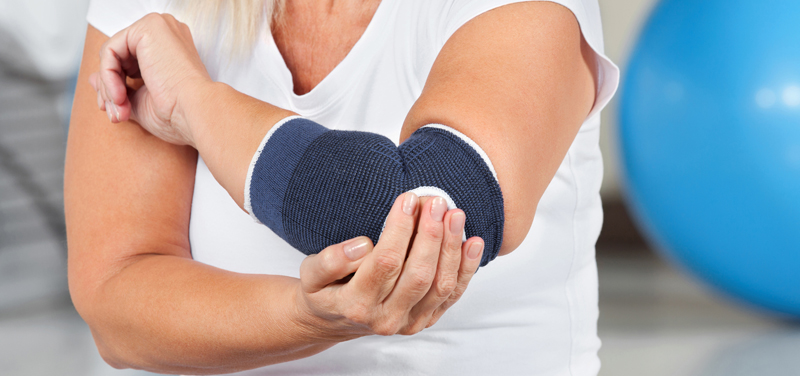Need Rheumatoid Arthritis or Osteoarthritis Treatment? Consider These Measures
Here’s a checklist of actions you can take—under a doctor’s supervision—that will help you deal with bone and joint pain. First step? Lose some weight.
Being overweight is one of the most important factors in the development of osteoarthritis (OA), and the added wear and tear placed on your joints may be only one factor in a complex interaction between obesity and OA. Researchers are learning that increased weight not only places added stress on your knees and hips, but also harms your joints on a metabolic level.
Fat (or adipose) cells and tissue aren’t just inactive energy storage centers, as once believed. Rather, they act like an endocrine organ, producing inflammatory substances that damage articular cartilage. Studies have found that obese patients have an increased risk of OA even in non-weight-bearing joints, such as the hand. So while controlling your weight may not be the only way to an osteoarthritis treatment, it helps.
Calculate Your Body Mass Index (BMI): Doctors rely on a measure called the body mass index (BMI) to figure out if you are obese and need to lose weight. To calculate your own BMI, start with your body weight, multiply it by 703, and then divide that by your height in inches squared. A BMI between 18.5 and 24.9 is considered normal, 25 to 29.9 is overweight, and 30 or higher is obese.
Drink Plenty of Water: For people with arthritis, especially those who may be overweight, drinking lots of water has special importance. Your cartilage, which is largely liquid, softens the impact of walking by squeezing out some of its water into the synovial space. So drinking plenty of water is key to keeping your spongy cartilage hydrated and soft, step after step, even if you’re carrying extra pounds. Most experts agree that you should drink at least five 8-ounce glasses of water a day.
Know Your Resting Metabolic Rate: In order to effectively manage your weight, know how many calories you normally burn at rest. This rate, known as the resting metabolic rate, or RMR, can vary widely from person to person and play a role customizing a dietary plan. Fortunately, a widely available handheld breath test (the BodyGem) can give you the answer in 10 minutes. Once you know your RMR, then you know not to restrict your daily calories any lower than this number, or your body will go into starvation mode and lower its metabolism to protect itself. Generally, you want to aim for a daily calorie limit that is 1.2 to 1.7 times your RMR, depending upon your normal activity level.
Specific Treatments
- Knee: If you have knee arthritis, your doctor may prescribe braces until you have sufficiently strengthened the muscles around the knee through exercise. Braces can support your knee and reduce excessive loading on an arthritic joint, but how effective they are remains unclear. The most basic type is a one-piece sleeve made out of elastic rubber (neoprene) that fits snugly around the knee. These braces, available over the counter, warm and compress the knee, providing moderate support for people with mild knee arthritis. For more severe arthritis affecting one part of the joint, consider a custom-fit unloader brace, a semi-rigid device made of plastic, foam, and hinged steel struts on each side to limit lateral movement. Talk to your doctor or an orthopaedic specialist about knee braces and which type is right for you. You may need to see an orthotist, who specializes in fitting custom braces. The specialist also may provide you with shoe inserts, or foot orthotics, which may help with knee arthritis pain.
- Feet and Ankles: Devices ranging from an ankle brace or semi-rigid foot orthotic to wedge inserts, rocker soles, and customized plastic orthotics, may help improve balance and normalize walking patterns affected by ankle OA. Similarly, a podiatrist may provide orthotics or recommend special shoes to help with foot arthritis.
- Wrists and Hands: If you have an arthritic wrist, your doctor or therapist may recommend occasional use of a wrist splint to immobilize the joint and prevent the bones from rubbing together. Simple neoprene splints may help patients with milder pain and functional limitations, but custom-molded splints may be better for people with more severe arthritis. Some splints immobilize the hand, while others allow movement. Splinting also may be helpful if you have arthritis at the base of the thumb.
- Elbows: Braces can maintain range of motion in the elbow and ease pain. Braces that support the back of the elbow are recommended for people who plan to use them during activity, while a brace that supports the front of the elbow may be more comfortable at night.

Balky elbow prone to arthritic flare-ups? Try a simple elbow brace to maintain your joint’s range of motion.
Originally published in February 2016 and updated.


 Bone Spurs on the Spine
Bone Spurs on the Spine  Knee Injections for Osteoarthritis Pain Relief
Knee Injections for Osteoarthritis Pain Relief  What Is a Slipped Rib?
What Is a Slipped Rib? 
Carrying extra pounds puts more wear and tear on our bones and joints. The answer: managing your weight via exercise and a healthy diet.